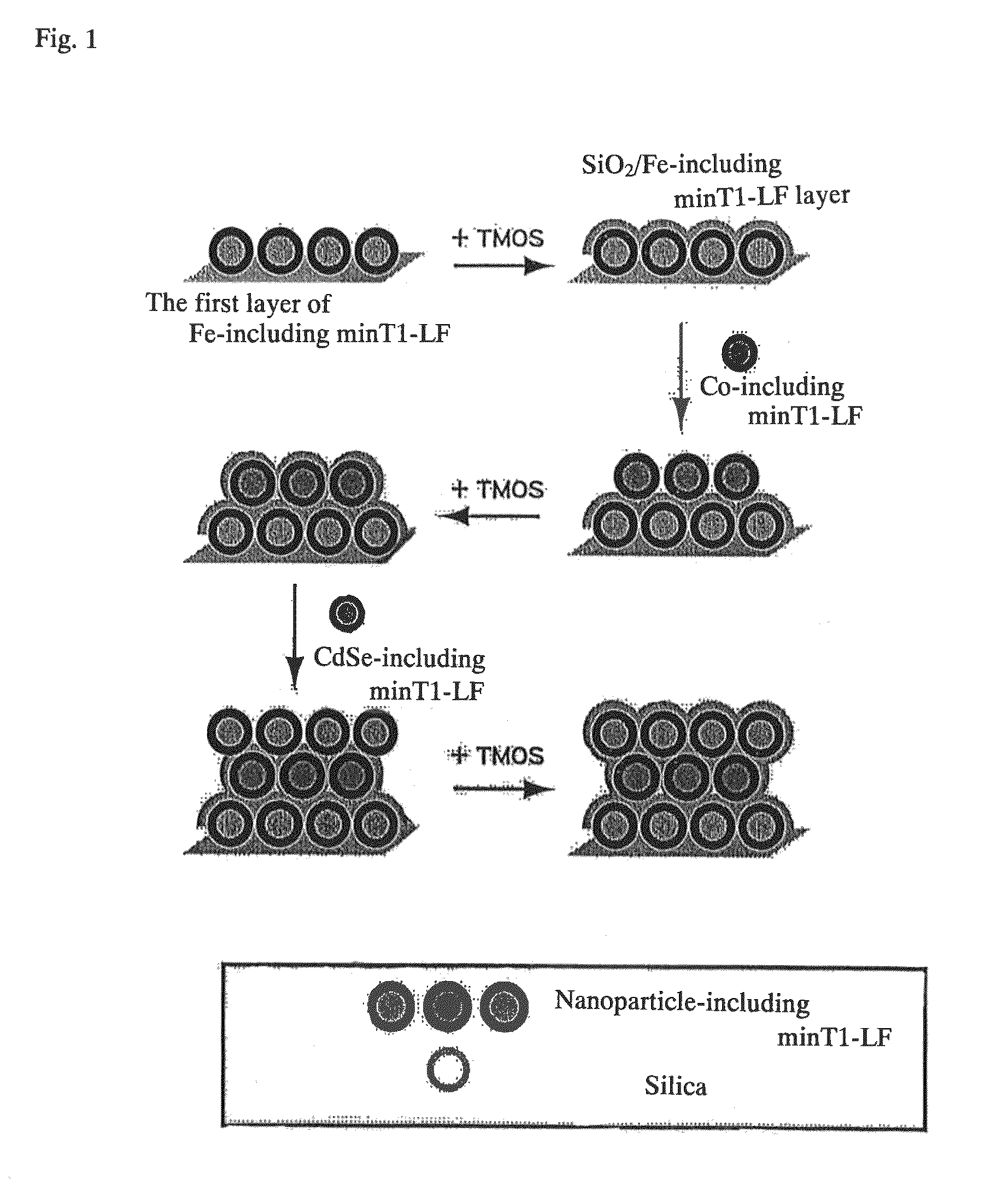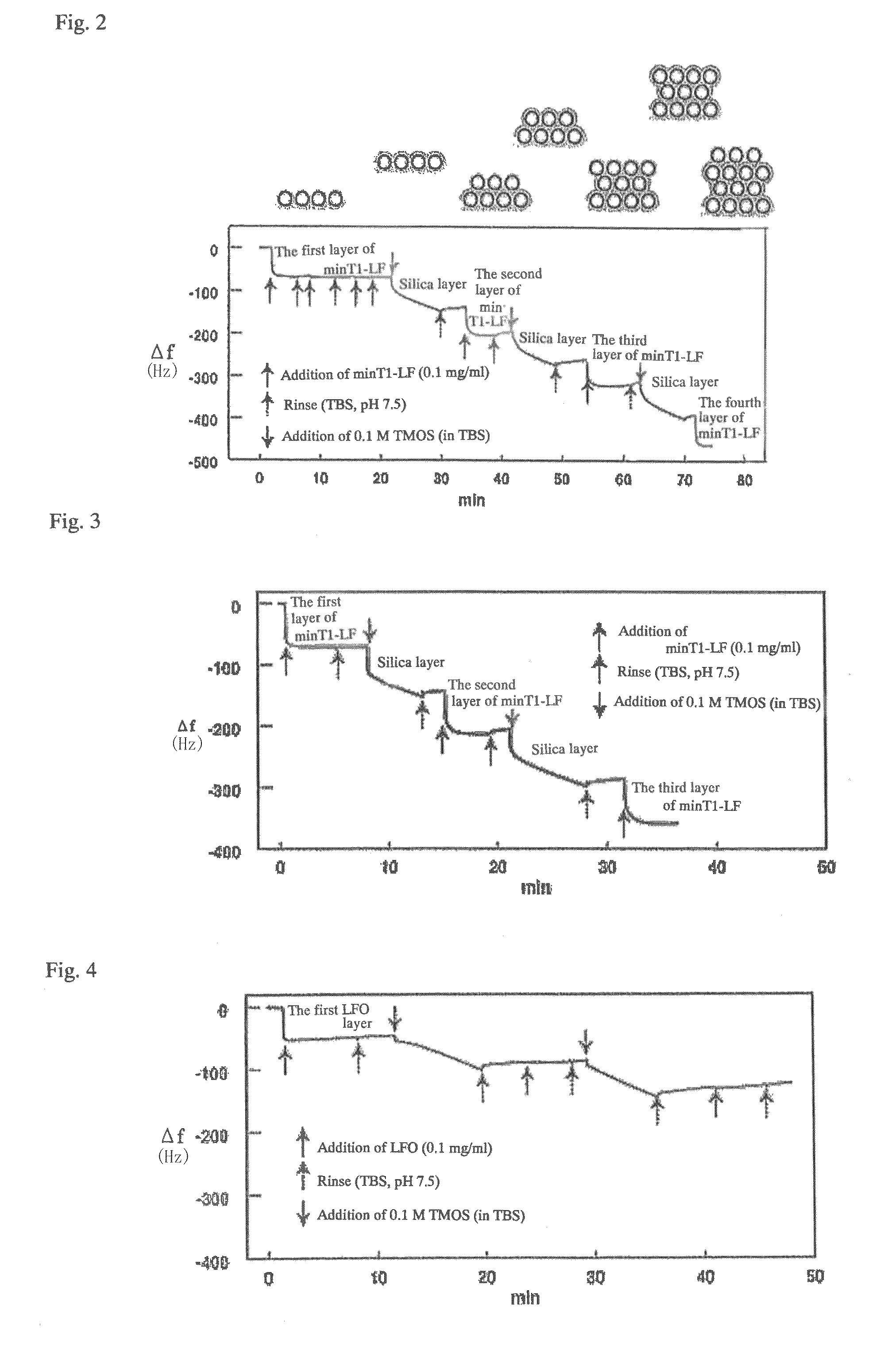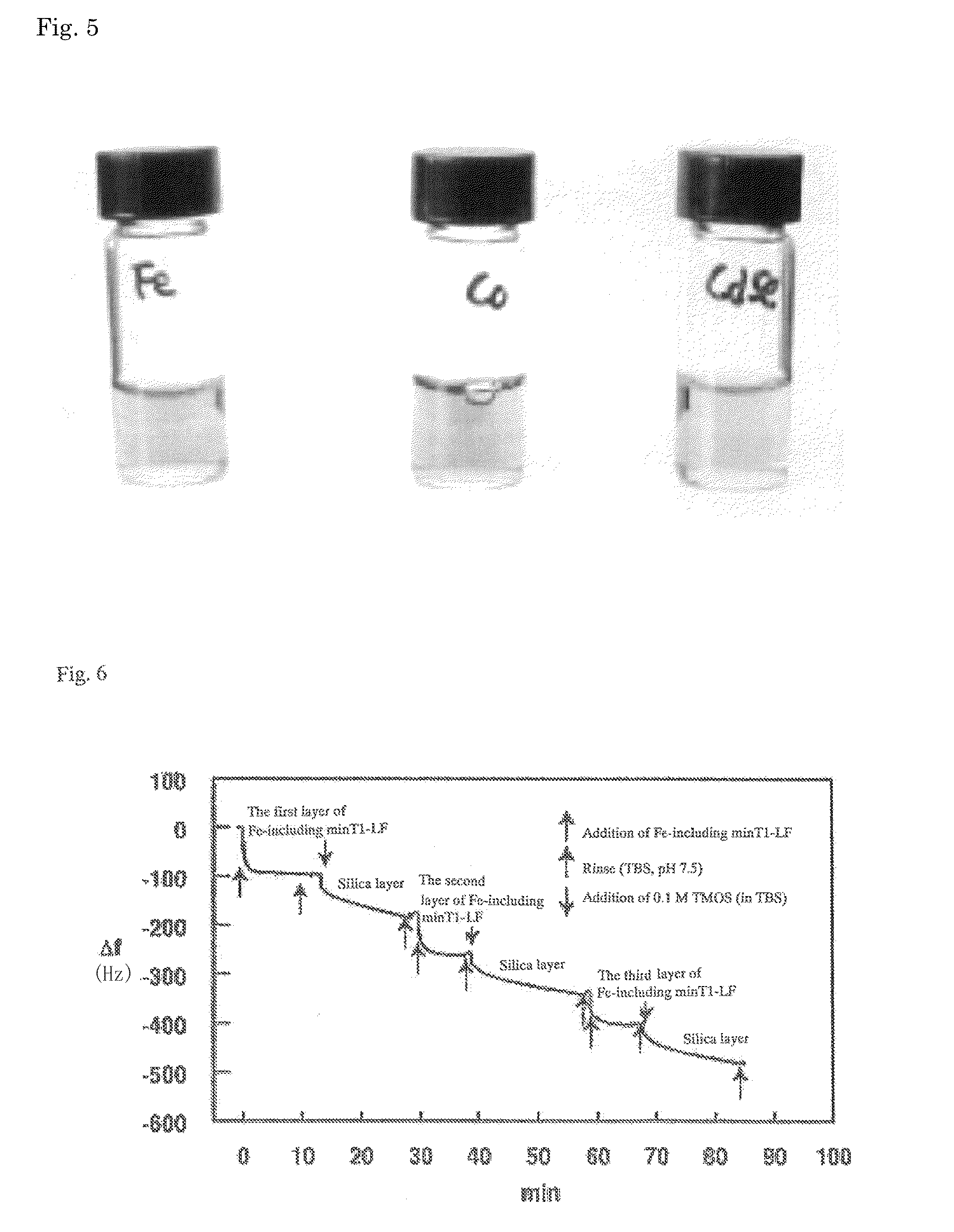Three-dimensional structure of functional material
- Summary
- Abstract
- Description
- Claims
- Application Information
AI Technical Summary
Problems solved by technology
Method used
Image
Examples
example 1
Preparation of a Fusion Protein minT1-LF Wherein Inorganic Material-Binding Peptides are Fused
[0068]The production of a DNA (pKIS1) for expressing a fusion ferritin protein (minT1-LF), wherein a horse spleen-derived type L ferritin (LF) is fused with a titanium-binding peptide (minTBP-1) consisting of the amino acid sequence shown by SEQ ID NO: 1, was performed in accordance with the following procedures. In brief, an annealing reaction was performed by: mixing 100 pmole / μl each of synthetic DNAs of SEQ ID NOs: 43 (sequence 5′-GATCCATGCGCAAACTTCCGGATGCGAGCT-3′) and 44 (sequence 5′-CGCATCCGGAAGTTTGCGCATG-3′) which are complementary to each other and encode Met, an initiation codon, and subsequently encode the amino acid sequence shown by SEQ ID NO: 42, and have a restriction enzyme BamHI linker sequence on the initiation codon side and a restriction enzyme SalI linker sequence on the opposite side, in 50 mM NaCl, 10 mM Tris-HCl, and 10 mM MgCl2; heating the resultant mixture at 70° C...
example 2
Manufacture of a Three-Dimensional Structure (a Method for Controlling a Three-Dimensional Positioning or a Method for Producing a Thin Film)—Specific
[0072]FIG. 1 shows a schematic view of a method for manufacturing a three-dimensional structure (a method for controlling a three-dimensional positioning or a method for producing a thin film) utilizing the multifunctionality of mimTBP-1 of SEQ ID NO: 1 with the use of the protein model minT1-LF obtained in Example 1. QCM-D300 (q-sense AB, Goteborg), a quartz-crystal biomolecule interaction analyzer, was used to study the three dimensional structure. As a quartz crystal, a titanium sensor which was a genuine part for QCM-D300 was used. The temperature was set at 25.36 to 40° C. The actual measurement temperature was about 24.97° C. to 25.00° C.
[0073]After the reference value was measured with 50 mM Tris-HCl (pH 7.5) and 150 mM NaCl (TBS), minT1-LF adjusted to the concentration of 0.1 mg / ml was introduced into the measurement chamber an...
example 3
Manufacture of a Three-Dimensional Structure (a Method for Controlling a Three-Dimensional Positioning or a Method for Producing a Thin Film)—Nonspecific
[0075]To confirm that the controlling of a three-dimensional positioning and the production of a thin film are also possible even if the binding form of minT1-LF in the first layer of Example 2 is a non-specific adsorption, a study was performed with a measurement by QCM-D300 (q-sense AB, Goteborg), a quartz-crystal biomolecule interaction analyzer, with the use of a gold-coated sensor in place of a titanium sensor. This time, the interaction between minT1-LF of the first layer and the gold sensor was a non-specific binding. The experiment was performed in exactly the same manner as in Example 2. Consequently, minT1-LF was successfully positioned three-dimensionally as shown in FIG. 3.
[0076]As a control experiment, the same experiment was performed using horse-L ferritin (LFO) not fused with inorganic material-binding peptides. Cons...
PUM
 Login to view more
Login to view more Abstract
Description
Claims
Application Information
 Login to view more
Login to view more - R&D Engineer
- R&D Manager
- IP Professional
- Industry Leading Data Capabilities
- Powerful AI technology
- Patent DNA Extraction
Browse by: Latest US Patents, China's latest patents, Technical Efficacy Thesaurus, Application Domain, Technology Topic.
© 2024 PatSnap. All rights reserved.Legal|Privacy policy|Modern Slavery Act Transparency Statement|Sitemap



